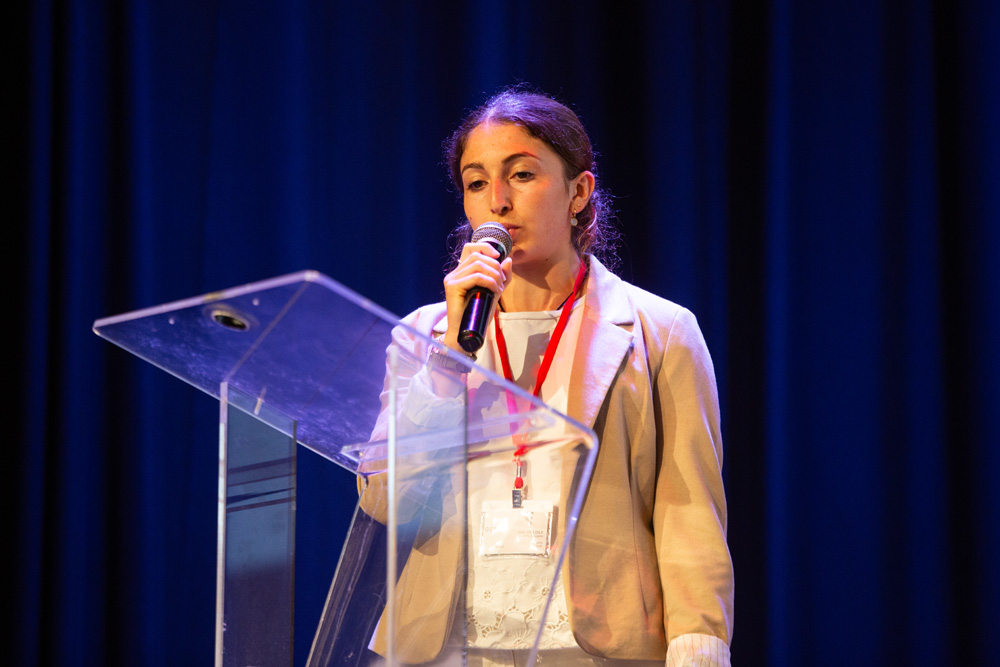Preliminary palatability tests for the use of 3D printed gummies
3 October 2024
I. Killisly, A. Gillette, N. Guillon, V. Lebreton, S. Vrignaud, F. Lagarce, S. Crauste-MancietService de Pharmacie, CHU d’Angers, France
Our hospital recently bought a 3D printer (Curifylabs®) for personalized medicine. The 3D printer is designed to provide tablets by extrusion of a melt ink at 45°C which solidified when coming back to ambient temperature in a final solidified soft gel form so-called gummy. Our objective was to assess the acceptability and ability to mask unwanted taste of the printer’s ink formulation (Curablend®). Preliminary test was performed on 7 adults (female n=5; male n=2) aged between 24 and 60 years to select among the 4 reference tastes the minimum concentration recognition thresholds on test solutions i.e.sweet (sucrose 100;200;400mM), bitter (caffein at 1;2;4 mM) sour (citric acid 1;3;7 mM) and salty (sodium chloride 100;200;400 mM). For each taste, the subject tasted 4 anonymous oral syringes of 5 mL and was asked to identify and rate the intensity of the perceived taste using a Labeled Magnitude Scale. Panelists were then selected by measuring their ability to detect the 4 main tastes on water solutions at selected threshold value i.e. sweet (sucrose at 100 mM) sour (citric acid 7mM) salty (sodium chloride 100mM) and bitter (caffein at 4mM). For caffein we also assessed the maximum concentration which can be incorporated to the ink i.e. 5% w/w. The selected final concentrations (one per taste) were then incorporated into the ink. In addition, to evaluate an alternative ink formulation that could be used for low solubility API, an additional set of tests was carried out using a mixture of Curablend®, caffein (4mM) and Polysorbate 80 at a maximum final concentration of 5%. One batch per condition were printed and tasted by the panel of subjects previously validated for the taste recognition test (n=7). All taste tests were blinded to avoid any perceptual bias.
Results: Preliminary test was able to select only 4 adults for next step recognition of taste in gummies. None of them were able to detect in gummies any of the undesired tastes, i.e. bitter, sour, and salty. For the second round of testing, 17 adults were enrolled, but only 7 adults (female n=4, male n=3) were validated for taste recognition and enrolled for gum evaluation. Of these, 100% were able to recognise the bitter taste when caffeine was present at the maximum concentration of 5% w/w. When it was at a lower concentration (4mM), only one of the 7 subjects was able to detect the bitter taste at the lowest intensity, 2 recognised the sweet taste, 2 found an unidentified taste and 2 had incorrect taste ratings, i.e. salty or sour. When polysorbate 80 was included in the formulation, all panelists found an undesirable taste, mainly unidentified or bitter/or salty, except for one who found a sweet taste. When caffeine was added to polysorbate 80, all panelists except one who perceived a bitter taste, perceived the sweet taste at a higher threshold than the placebo. In conclusion, Curablend® formulations are quite good at masking unwanted tastes. However, care must be taken when setting the maximum concentration of the API and when adding polysorbate to the formulation.
